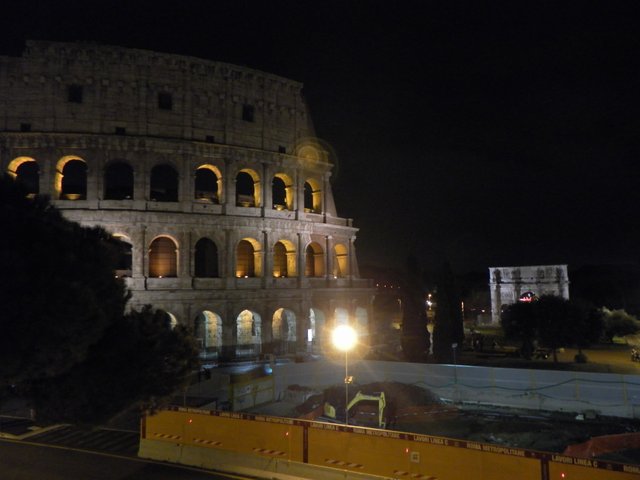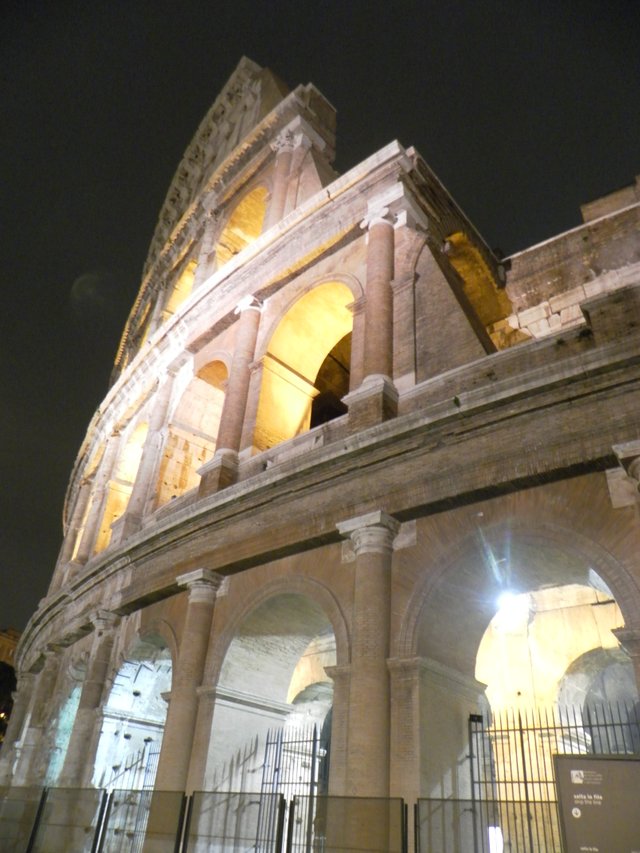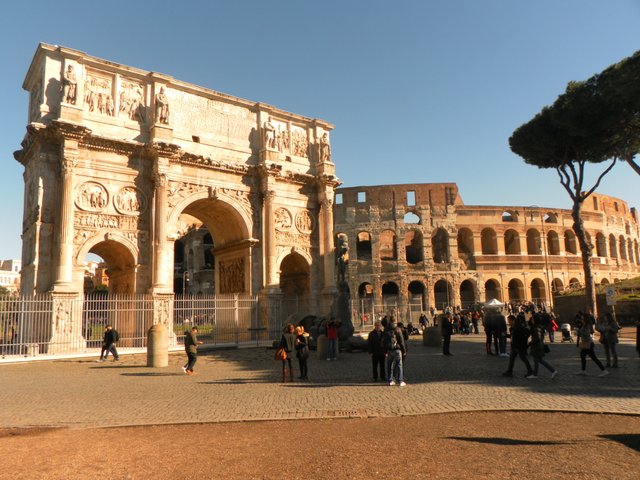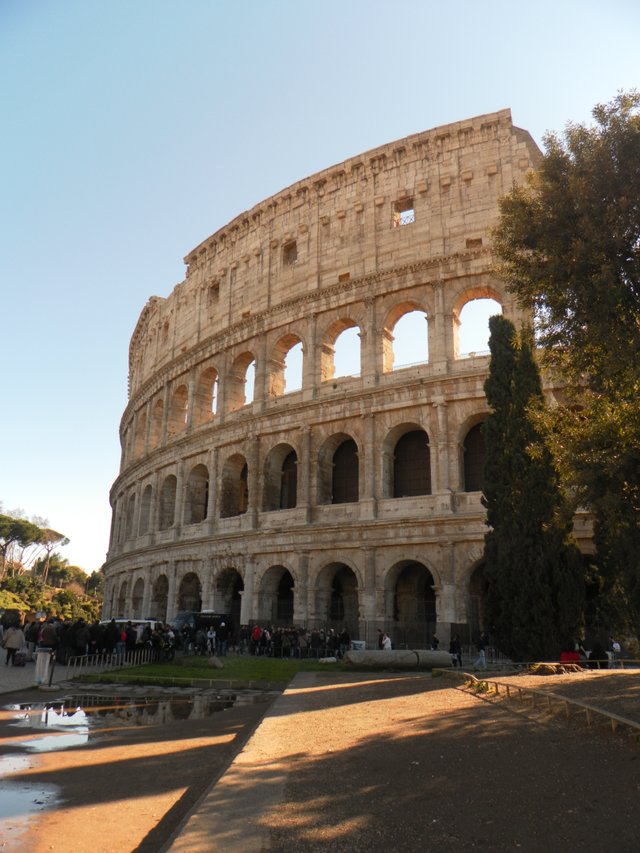Unforgettable Italy: Colosseum history by @papi.mati
Contest photo
Intro and about the construction
There is probably nothing more Roman, nothing more recognizable in the world as an Italian building like the Colosseum. This week I will try to write a few words about this impressive pearl of architecture that I visited in 2015.

The Colosseum, actually the Flavian Amphitheater, was built between 72-80 AD. It is a huge, slightly oval structure, 188 meters long and 156 meters wide, with a circumference of 524 meters and a height of 48 meters. Its loftiness and dimensions inspire respect and delight even today, and when you think that the building was created almost two thousand years ago and took only eight years, i.e. shorter than now a short section of the highway in my home country is built, the delight is even greater.
The building was able to accommodate up to 50,000 viewers, which made it one of the largest, if not the largest, facilities of this type in the world at that time. It included an arena with a system of underground corridors and four floors, the first of which was in the Tuscan order, the second in Ionic, and the third in Corinthian. The arena was usually covered with a wooden floor on which a few centimeters of sand were poured (sand is Latin for "harena" and hence the name). The building, apart from the arena and the place for the audience, included buffets, changing rooms, showers, armories, rooms for gladiators, and cages for animals. On rainy or very sunny days, the entire audience could be covered by the so-called velarium - a cloth cover used in amphitheaters.
The audience was divided into different sectors. On the first level, closest to the arena, there were places for men from senatorial families and a podium with the emperor's throne. They had the best view of the show and were able to get out of the facility the fastest (thanks to the numerous entrances, which were numbered and properly marked, it did not take more than six minutes to leave the building from the lower floors). The second floor belonged to the tribunes of the people, military, and representatives of the more powerful plebeian families, then there were poorer castes and at the very end, right under the roof, women
The building was opened by Emperor Titus, son of Emperor Vespasian, who started construction. According to historical records, about 900 gladiators and 500 wild animals were killed during the opening, which lasted for one hundred days (the Well Games)
Purpose of the building

By default, the stadium served as an entertainment venue. Everyone, probably with some training, knows that gladiator fights took place there, a motif so eagerly used in contemporary films and literature. However, not everyone can be aware that, in addition to gladiators, hunting for wild animals was also presented at the stadium and, what is particularly interesting for me, = naumachia, i.e. shows depicting a sea battle, which required the installation of a special swimming pool imitating the sea, reconstruction of ships on a scale of 1: 1, original costumes. Usually, the role of the enemy was played by condemned prisoners who were killed in front of the audience, although, as in the case of gladiators, the emperor could show them mercy and let them live.
The Colosseum also held the Games until 528, that is, for 52 years after the fall of the Western Empire. It was a very important sports facility
After falling of Roman Empire

The building has gone through a lot and it can undoubtedly be said that we are very lucky that we can still admire it in modern times. First, it was badly damaged in a fire in 217, which destroyed most of the decorations, then in the earthquake in 445, and later in the Middle Ages it began to be used as a residential area - many people of the poorer state lived inside, a church was built inside, and the arena was transformed into the cemetery. In 1200 the Colosseum fell into private hands and was used as a private castle, and in 1349 it fell into disrepair and deserted after another earthquake that destroyed one of the outer walls. Since then, the Colosseum was regularly plundered by the Romans, who operated it as a quarry. The plunder did not end until 1744 when it was officially proclaimed "the place of martyrdom of Christians." Interestingly, there is no historical evidence that Christians were indeed murdered there, as the first records of such events dating back to the 17th century. We do know, however, that the murders of Christians took place in another facility, called the "Circus of Nero", which was located on the Vatican Hill.
Since 2007, the Colosseum has been included in the list of the seven wonders of the world. Annually, it is visited by tens of thousands of tourists from all over the world, who can admire it not only from the outside but also from the inside, during one of the guided tours that tell about the history of the building and show visitors the most wonderful corners of the Colosseum.
All the photos included in this post belong to me.
Thank you for reading,
@papi.mati
Photos made with my old Samsung WB5500
We probably have some users younger than this camera ;)

Encantadoras fotografías, amigo @papi.mati. Sería una experiencia sorprendente, poder ser yo, quién fotografíe esas extraordinarias escenas.
Italia es uno de los lugares que me encantaría visitar, si tuviera la oportunidad de viajar hacia allá.
La forma como describes la historia “Coliseo”, como la “impresionante perla de la arquitectura” me permitió investigar un poco para conocer más.
Concluyendo entonces que el Coliseo tiene que estar en la lista de mis sitios “Unforgettable Italy”.
#onepercent #affable #venezuela
Thank you for your comment. I'm glad that you liked my photos and the story I presented in the post. I hope some day you will visit Colosseum and every other place around the world which you wish to see.
Have a great day!
It is my pleasure, friend @papi.mati. Thanks for your good wishes.